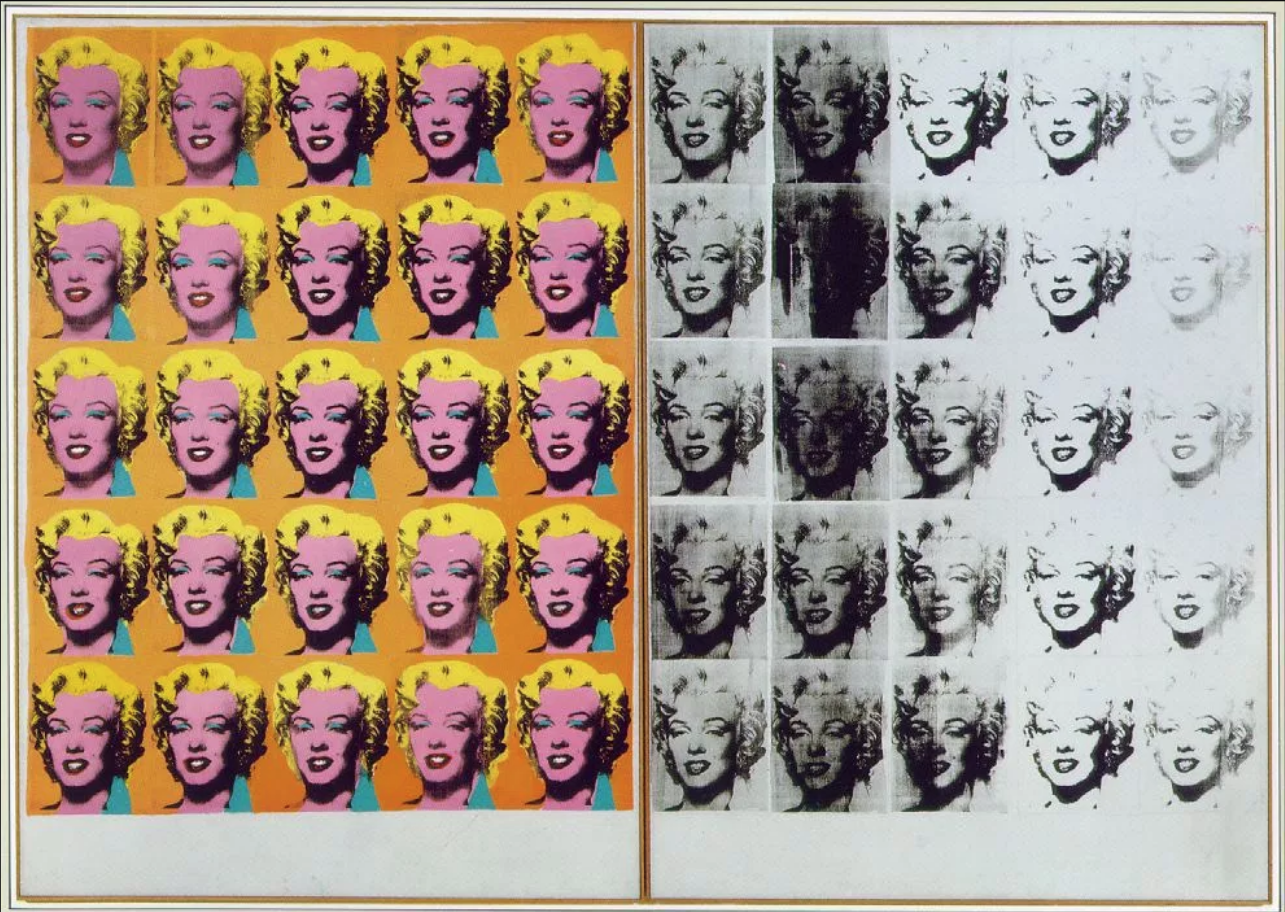Bridge 2: Connotations & Extrapolations (Context + Investigation)
Set: 2.5
Due 3.5: response to critique: final 2 diptychs – exploring critique feedback
________________________________________________________________
Part I: Object, Form/Material, or Image – Find / Create an object, form, or image that relates to your topic. Using this, create 7 diptychs – two different explorations using the same material done seven times…changing your materials for each diptych (see details and examples below).
Goal: this is an investigation in medium and materiality: how materiality informs, influences or dicates the context, content and meaning of a visual idea.
________________________________________________________________
Part II: 2 additional diptychs will be created as a response to the initial diptychs.
Using the feedback from your peer critique and the in-class cognitive mapping exercise – create 2 final diptychs that further question and evolve your studio thesis project idea.
5 March: final 2 response diptychs due
Required for the entire project: an LP post documenting your process – reflection questions will be forthcoming. Due – 6 March 9:00 am
________________________________________________________________
Project Details: Object, Form/Material, or Image – a diptych material exploration
For this exercise you will explore your topic through your chosen Object, Form, or Image, using different mediums – in different ways – to test how materials/mediums affect the context, content and meaning.
Limitations:
- Limitations: 5 x 7 inch works on paper (or a size of your choosing, all must be the same size): create two images using the same chosen materials for each pair. Make sure to use the materials differently on each artwork – each piece must be a response or reaction of your chosen Object, Form/Material, or Image. As a diptych, the two artworks must be in visual and material conversation with one another.*
*Meaning that the artwork corresponds and relates in some way to each other both visually and materially.
- Create different rules for each artwork. For instance, if you are exploring watercolor for one of the diptychs, limit yourself to only using 2 complementary colors, e.g., orange & violet on one, on the other, yellow and blue. Another set of rules could be, creating a drawing with pen and ink using only short marks, and on the other drawing could be made using only one line to finish the whole drawing. (These are examples only, your materials chosen must relate to your topic.)
- Experimenting (is encouraged) with new mediums you’ve not tried before – challenge yourself through risk taking.
- Your diptychs do not all have to be 2-D. You may explore other media (materials) from sculpture, video, audio, etc.
Goal: create seven diptychs (a total of 14 artworks) where each set of 2 artworks explore a new medium/material of your choosing in a way that explores the content + meaning of your Object, Form, or Image in a new and interesting way. The take-away from this assignment is that you will better understand new materials as well as gain insight on how materials and mediums affect meaning + content.
Possible rules – you are encouraged to create your own. Make sure the materials you choose relate to and make sense for the content, context and meaning of your topic and the Object, Form, or Image you are exploring.
At least one set of diptychs must use gilding in some way. This could be in traditional way or a new, unique way.
- Create a collage using the aluminum from a can (one collage is from the inside of the can, the other by using the outside of the can)
- Using watercolor, duplicate your object, form, or image but painting super light, ghostly, so you have to look very carefully and close to see the image. The other image can be completed by painting either super dark, or – using gauche – super opaque.
- Carving your object, form, or image out of different types of food or other materials such as wood, or 3-D printing the object or carved out of acrylic (plexiglass)
- Use only pins to re-create your object, form, or image (and what’s the opposite?)
- Create a collage using all color images and the other could be done with only black and white
- Have a stranger draw one iteration and you draw the other
Learning outcomes:
- At an introductory level, explore visual representations of abstract ideas (using 2-D, 3-D and/or 4-D media). Employ visual and perceptual thinking as a problem-solving tool across multiple art and design applications.
- Demonstrate reflection on creative skills learned, choices made, and connections fostered, through the ongoing documentation and archiving of assignments in the learning portfolio. Students will use the portfolio to demonstrate an engagement with the idea of making as a form of thinking.
- Demonstrate an ability to integrate concepts, material skills and techniques from other courses and experiences into project work.
- Demonstrate an introductory ability to develop a research question or problem from a hunch or interest through contextual research and iterative research process.
- Demonstrate an introductory capacity to use studio-based making and interactions to investigate, test, and hone a research question / problem using a range of methods.
